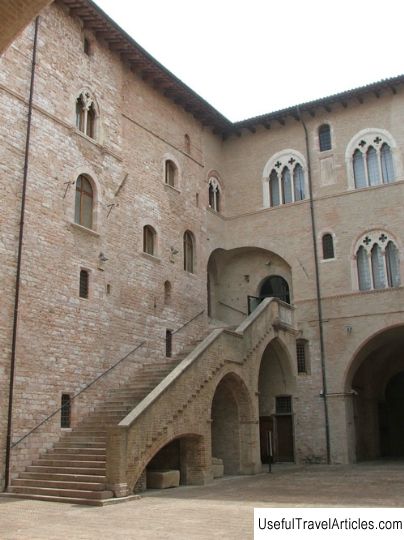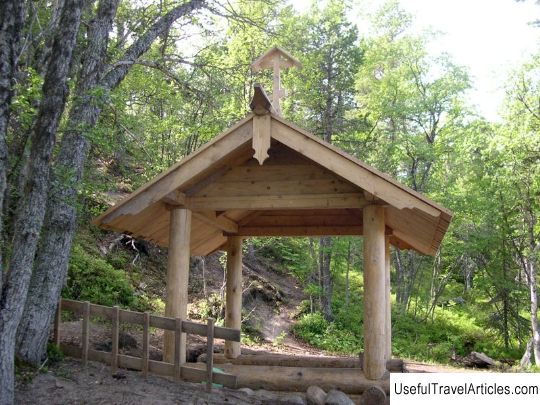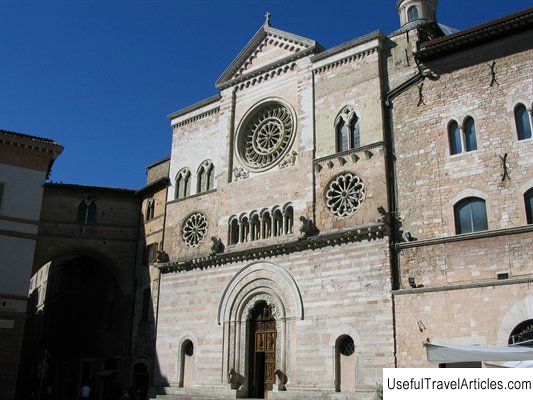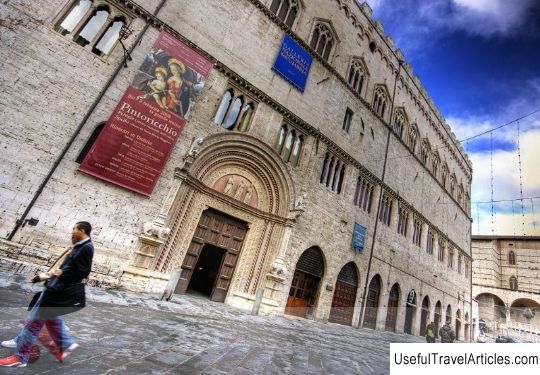Palazzo Trinci in Foligno (Palazzo Trinci) description and photos - Italy: Umbria
Rating: 7,7/10 (3011 votes) 
Palazzo Trinci description and photos - Italy: Umbria. Detailed information about the attraction. Description, photographs and a map showing the nearest significant objects. The title in English is Palazzo Trinci. Photo and descriptionPalazzo Trinci is an aristocratic palace in the heart of the small town of Foligno in Umbria. Today it houses the Archaeological Museum, the City Art Gallery, the Tournaments and Jousting Multimedia Museum and the City Museum. Palazzo Trinci was once the seat of the influential Trinci family, which ruled in Foligno from 1305 to 1439. The palace was built on the foundations of a medieval building by order of Ugolino Trinchi III in the late 14th - early 15th centuries. After the death of Corrado Trinchi III in 1441, the Palazzo became the seat of Foligno, the people's priors and papal legates. It was then that the building slowly but surely began to decline. Already in 1458, Pope Pius II allocated 200 guilders for its restoration. Donations for the same purposes were allocated in 1475 and 1546. The southwestern part of the Palazzo has been used as a prison since 1578, and in the early 18th century a small part of the building was turned into a theater. The Palazzo suffered serious damage during the earthquakes of 1831-1832, then as a result of bombing during the Second World War and another earthquake in 1985. The current unremarkable facade in the neoclassical style was made in 1842-1847 designed by Vincenzo Vitali. The arched courtyard reflects the challenges faced by architects who wanted to preserve as much of the pre-existing building as possible. They created a kind of transition from the Romanesque and Gothic styles on the ground floor to the Renaissance style on the upper floors. The steep Gothic staircase was built on three Romanesque cross vaults between 1390 and 1400, when the Palazzo belonged to the wealthy merchant Giovanni Ciccarelli. The surface of the stairs and the surrounding cloister were originally covered with frescoes, which, unfortunately, are almost lost today. Demolished in 1781, the staircase was rebuilt in 1927. All the frescoes in the palace, with the exception of those in the chapel, were painted in the early 15th century by order of Ugolino Trinchi III. The covered balcony is decorated with frescoes depicting scenes from the legend of the founding of Rome - with their help the Trinci family wanted to show their relationship with the founders of the Eternal City. And the small chapel is painted with frescoes depicting scenes from the life of the Virgin Mary - they were worked on by Ottaviano Nelli in the first half of the 15th century. Of particular interest are the frescoes in the so-called Hall of Stars depicting symbols of the humanities, planets, different stages of human life and time, and in the Hall of Emperors, where you can see the rulers and heroes of Ancient Rome. The last room also displays some archaeological artifacts.         We also recommend reading Suan Siam Water Park / Siam Park City description and photos - Thailand: Bangkok Topic: Palazzo Trinci in Foligno (Palazzo Trinci) description and photos - Italy: Umbria. |




